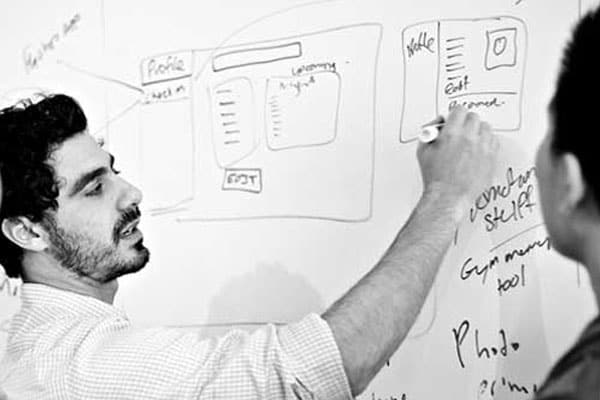
Low-fidelity (lo-fi) Prototyping involves the translation of high-level design concepts into tangible prototypes that can be tested against one another. Prototypes are often created using fast and cost effective methods, such as pieces of paper, sketches and wireframes.
Designers and clients are both guilty of speeding through the creative process, in search of a pixel perfect visual. However, even the most stunning mockups are lacking without an upfront exploration of the appropriate page flow and interaction design.
Many agencies go the route of charging exorbitant design fees with promises of nailing it on the first shot. Afraid of suggesting to their high-end clients that a more informal process be used to experiment and test a variety of layouts, they are more concerned with hitting aggressive timelines and impressing the client with aesthetics.
Having been on both sides of the equation, I get it. Clients are excited and impatient, and want instant gratification. Agencies are equally excited and eager to show off their design chops. However, this unfortunately results in projects with beautiful form, but severely flawed function.
No design team, regardless of experience or talent, can create a perfect user experience without A/B testing different layouts and considering how various choices impact user behavior, conversion paths and engagement. This is especially true for customer-driven design, where without putting yourself in the shoes of the end user, creating a conversion-centric product is next to impossible.
The benfits of Low Fidelity Prototypes
– Cost effective
– Ensures a variety of ideas/concepts are tested
– More effective collaboration
– Fast turnaround time
– Generates more honest feedback
Cost effective
It is shocking to see so many design shops waste valuable design hours on a tedious obsession with perfecting pixels. Doing UX work in Photoshop is a waste of resources and should never be an option.
Every design process should begin with hand sketches, pieces of paper or quick and dirty digital wireframes. This way, very little time is lost if any given concept is shot down. You simply crumble up your sketch and toss it in the trash. No harm, no foul.
Ensures a variety of ideas/concepts are tested
One of the biggest mistakes made by website design consultants, is spending too much time on a singular layout or concept. This creates a tunnel vision effect, where no thought is given to whether alternate versions would result in a better user experience or a higher degree of engagement.
As previously stated, not even the most talented professionals can predict the nuances of user behavior. It’s paramount to thoroughly test multiple design variations to ensure all angles are covered, and the choices being made are based on reality.
More effective collaboration
Typically, only web designers work in Photoshop. However, starting with pencil sketches or cut up pieces of paper can facilitate collaboration, allowing folks like marketers, developers, UX experts and even clients to participate in the decision making process.
Cross-disciplinary website planning ensures the project benefits from a well-rounded and informative process, rather than designing mockups in a vacuum, only to realize that vital components are missing and it’s too late to turn back.
Fast turnaround time
Lo-fi prototypes are high level and focused on nailing down the major UX elements, such as user pathways and hierarchy of features on a page. We often hold charette style design sessions during which dozens of ideas are thrown on the table and those without merritte are quickly eliminated.
During the initial stages of vetting a design concept, it’s a major luxury to be able to rapidly turn out new iterations, or revise existing ones.
Generates more honest feedback
Web designers pour their heart and soul into their work, and sometimes even their team members are reluctant to criticize their products, out of fear they will hurt their feelings.
Prototypes, on the other hand, are created in an informal manner and have much less emotion and ego attached to them. It’s much easier to convince someone to tear up a 10-minute sketch than it is to change a design they have been working on day and night for two weeks straight.
In Conclusion
Agencies of all sizes can offer greater value to their clients by implementing a Low Fidelity Prototyping process. A properly planned end product will increase efficiency, effectiveness and overall project success, which does wonders for forging fruitful long-term relationships.
Let`s Get
In Touch
Contact us today for a free consultation
and cost estimate for
your project.
We work with companies in all
industries, big or small.
Give Us a Call: 786-529-6039
Services
©2024 FUZE DIGITAL INC. Ignite Your Brand™ | privacy





